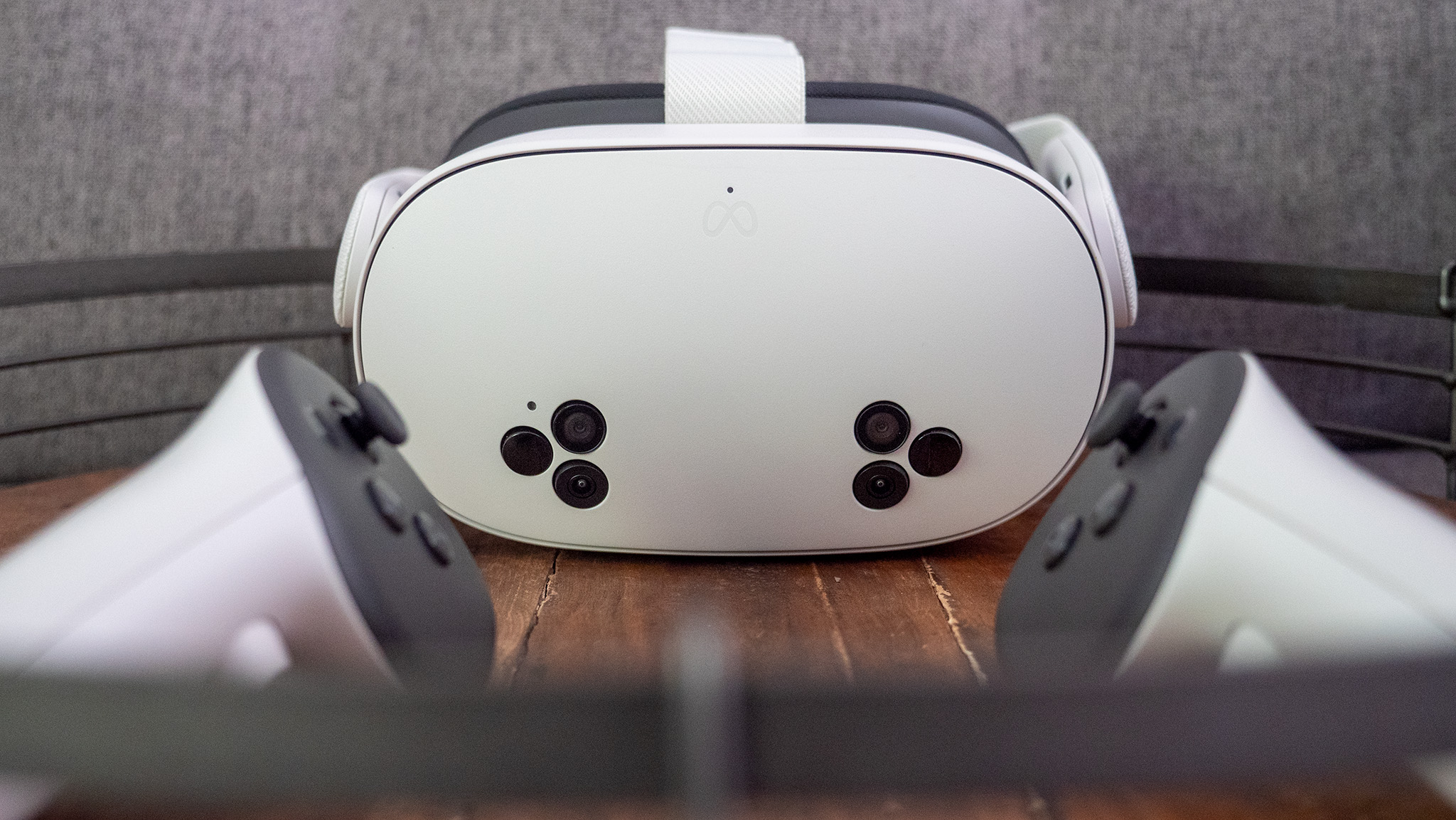Android Central Verdict
Meta has once again surpassed all expectations of what a standalone VR headset can be for just $299. The Meta Quest 3S is quite literally a Quest 3 with the Quest 2's lenses and display, better hand tracking and low light tracking, a new mixed reality button on the headset, and all the exclusive games the more expensive Quest 3 gets. Enthusiasts will want to spend the extra money to get the better display and lenses of the Quest 3, but everyone else will likely choose the Quest 3S because of the price, yet get very little trade-off in the process.
Pros
- +
Powerful XR2 Gen 2 chipset
- +
Excellent mixed reality quality
- +
Next-gen controllers and hand tracking
- +
Thousands of games, including Quest 3 exclusives
- +
Exclusive IR illuminators and mixed-reality button
- +
Unbelievable price
Cons
- -
Older lenses produce a dull image compared to Quest 3
- -
90-degree FoV can feel constricting compared to PSVR 2 or Quest 3
- -
No 3.5mm audio jack
Why you can trust Android Central
The Meta Quest 3S is a budget triumph. Meta delivered a headset that's $200 cheaper than the Meta Quest 3 without sacrificing its powerful graphics, full-color mixed reality vision, new controllers with advanced haptic feedback, and seamless software.
Obviously, Meta made some concessions to hit this $299 price point, but there are surprisingly few. For Quest 2 owners who paid that much for their last console, it'll feel like a significant jump for a fair price, even if they'll have to accept the unchanged lenses and display.
Best of all, the Quest 3S actually has a couple of design and UX improvements over the more expensive Quest 3. And it matches it in areas like next-gen performance and improved rendering.
Meta Quest 3S: Price and availability

The Meta Quest 3S retails for $299 and includes 128GB of storage, while the Meta Quest 3S with 256GB of storage retails for $399. Both models come in a white colorway and come with a pair of Quest 3 touch controllers, a preinstalled cloth head strap, and a preinstalled cloth facial interface.
You also get Batman: Arkham Shadow, an excellent AAA action title, for free through the end of 2026. Plus, you receive a one-year limited warranty and a three-month trial for Meta Horizon Plus, which gives you a catalog of popular games to try and two new games per month (as long as you stay subscribed).
A few Oculus Quest 2 accessories work on a Quest 3S, so you can carry them over, but you're most likely going to have to buy new accessories for things like the strap, facial interface, and controller straps. Our best Quest 3 and 3S accessories guide can help you get started.
Category | Meta Quest 3S |
|---|---|
CPU | Snapdragon XR2 Gen 2 |
RAM | 8GB |
Storage | 128GB ($299); 256GB ($399) |
Display | 1,832 x 1,920 LCD; 773 PPI; 20 PPD |
FOV | 96º H; 90º V |
Lens | Fresnel |
Mixed reality | 4MP RGB (18 PPD) |
Depth sensor | Software |
Slimness (excluding facial interface) | 73.9mm |
Weight | 514g |
Battery | 4,325mAh |
Controllers | Touch Plus |
Meta Quest 3S: Design, comfort, and battery life

The Meta Quest 3S design isn't perfect, particularly its cloth strap and balance. But I also found the default Quest 3 and 2 designs problematic, needing upgrades for a more immersive experience.
Get the latest news from Android Central, your trusted companion in the world of Android
The Quest 3S is a gram lighter than the Quest 3, and uses a similar Y-shaped cloth strap that's supposed to balance the weight of the headset and make it less front-heavy. Unfortunately, this strap rests against the top of my ears and irritates my skin rather quickly, which is why I quickly swapped it out for my elite-style BoboVR M3 Pro head strap.

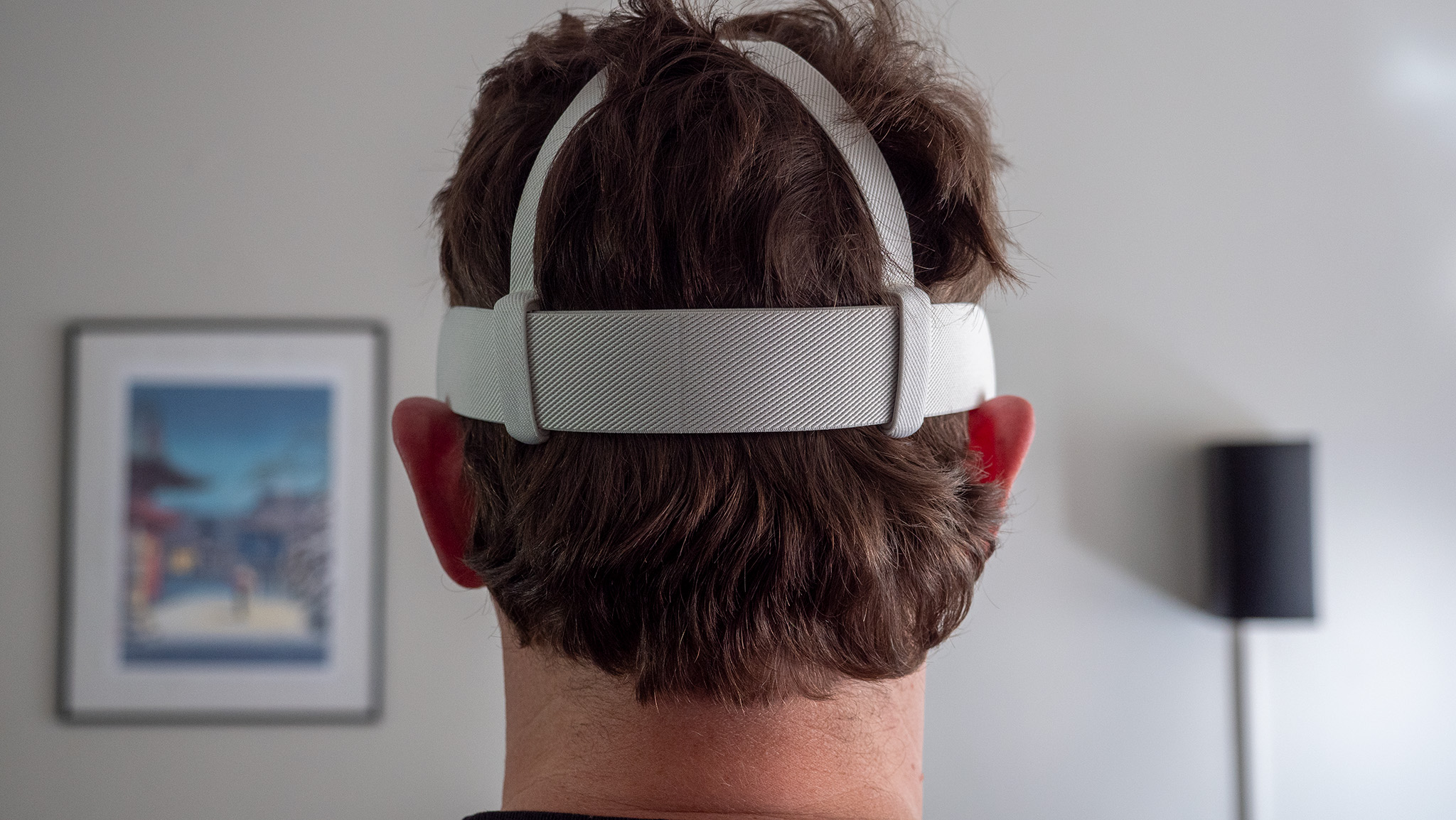

Because the Quest 3S uses thicker Fresnel lenses than the Quest 3's thin pancake lenses, it has an additional 10mm of depth, putting the center of gravity further away from your face. But at the very least, the Quest 3S is 20mm slimmer than the Quest 2, a more significant improvement, and I personally didn't find the 3S to be less comfortable than the Quest 3 despite this.
In part, this is because Meta gave the Quest 3S a revamped facial interface design that feels great. I typically can't wait to swap out Meta's facial interface for a third-party one, but I've been pleasantly surprised by how comfortable this one is.
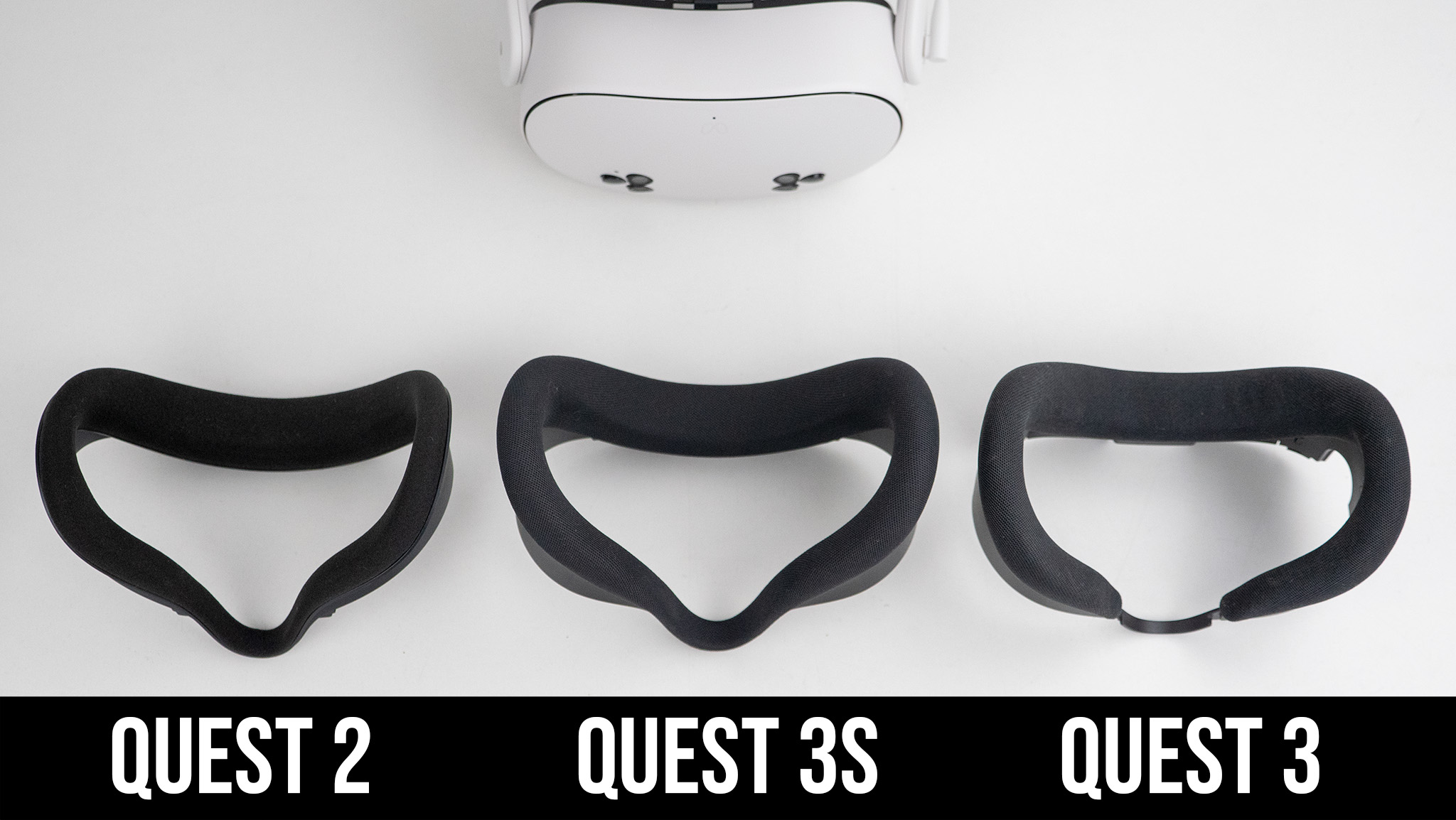

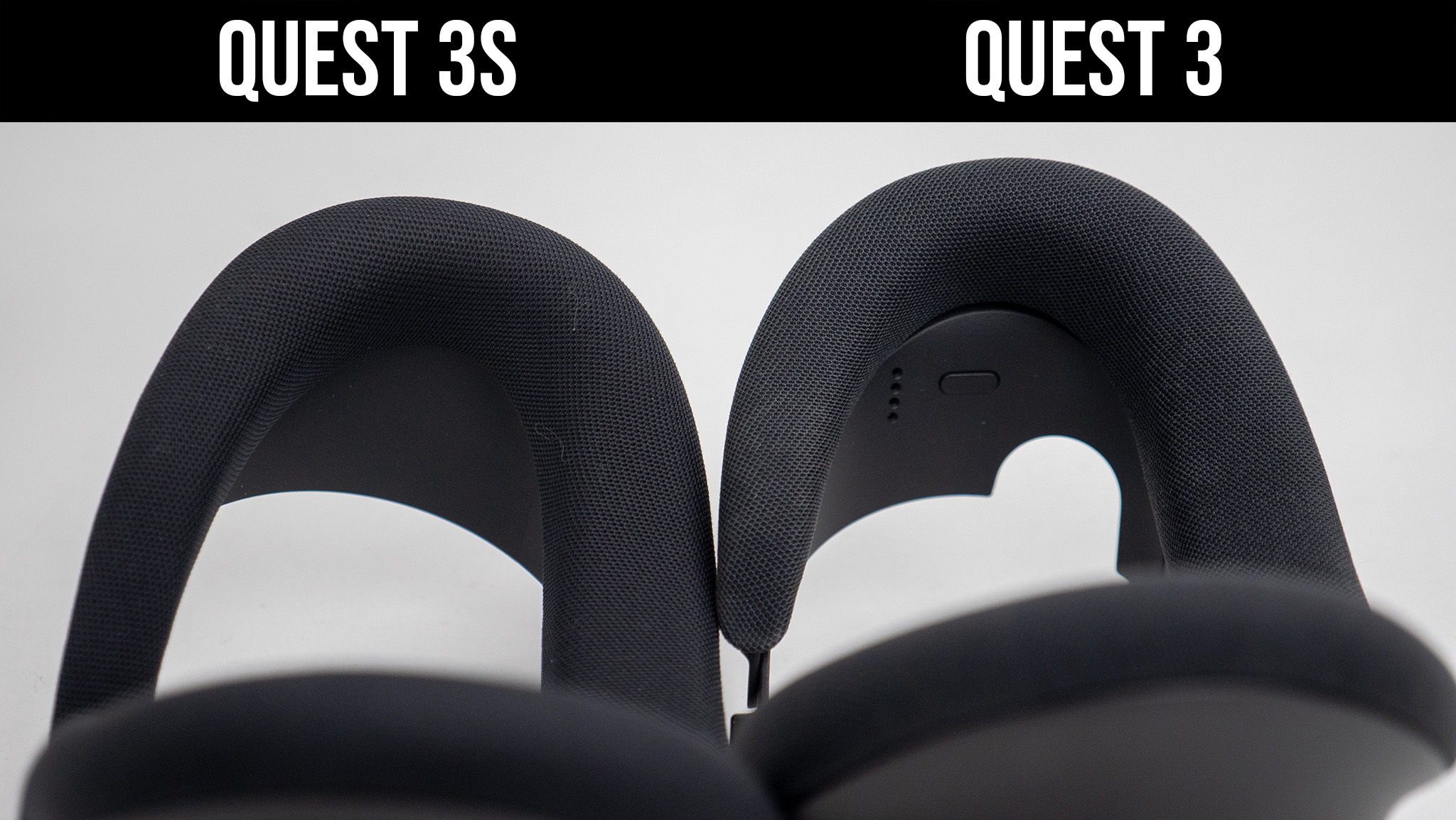
The facial interface is easy to swap out, and I did eventually replace it for a few reasons. First, glasses wearers will have to use the glasses spacer in the box, which isn't as comfortable as the Quest 3 facial interface that lets you adjust the depth to fit glasses inside. So you can look for third-party interfaces that fit glasses better.
More generally, the Meta Quest 3S can have issues with lens fog, particularly in humid environments. Meta sells an excellent breathable facial interface with semi-transparent sides, while the AMVR Upgraded Full Ventilation face cover is a more affordable option that works even better.
Lastly, cloth may feel nice and soft, but it also absorbs sweat and can become unhygienic over time. In the short term, you can buy silicone covers that you can remove and wash after play sessions. But in the long run, you may want a cover with removable padding that's easier to clean directly.
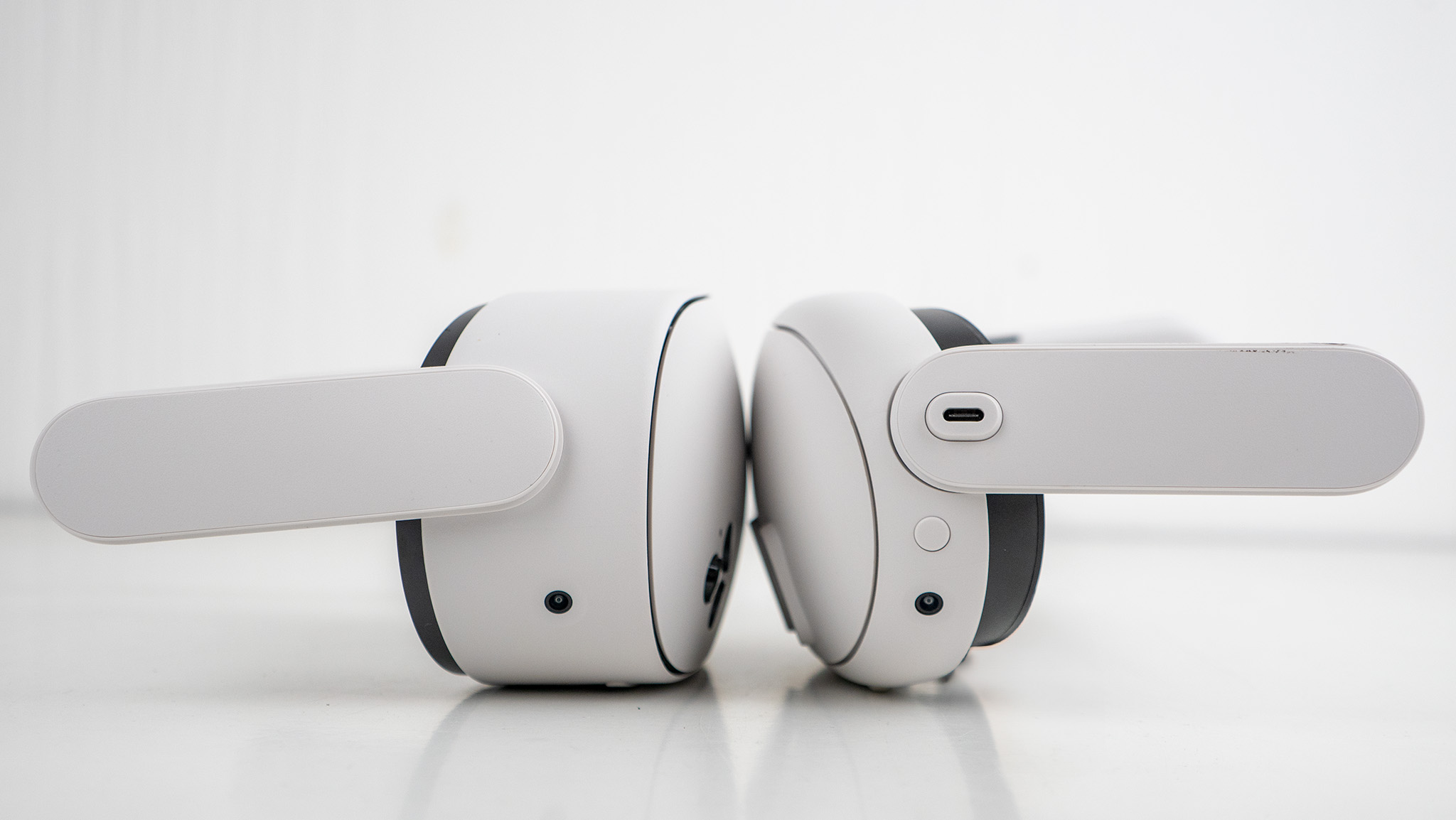

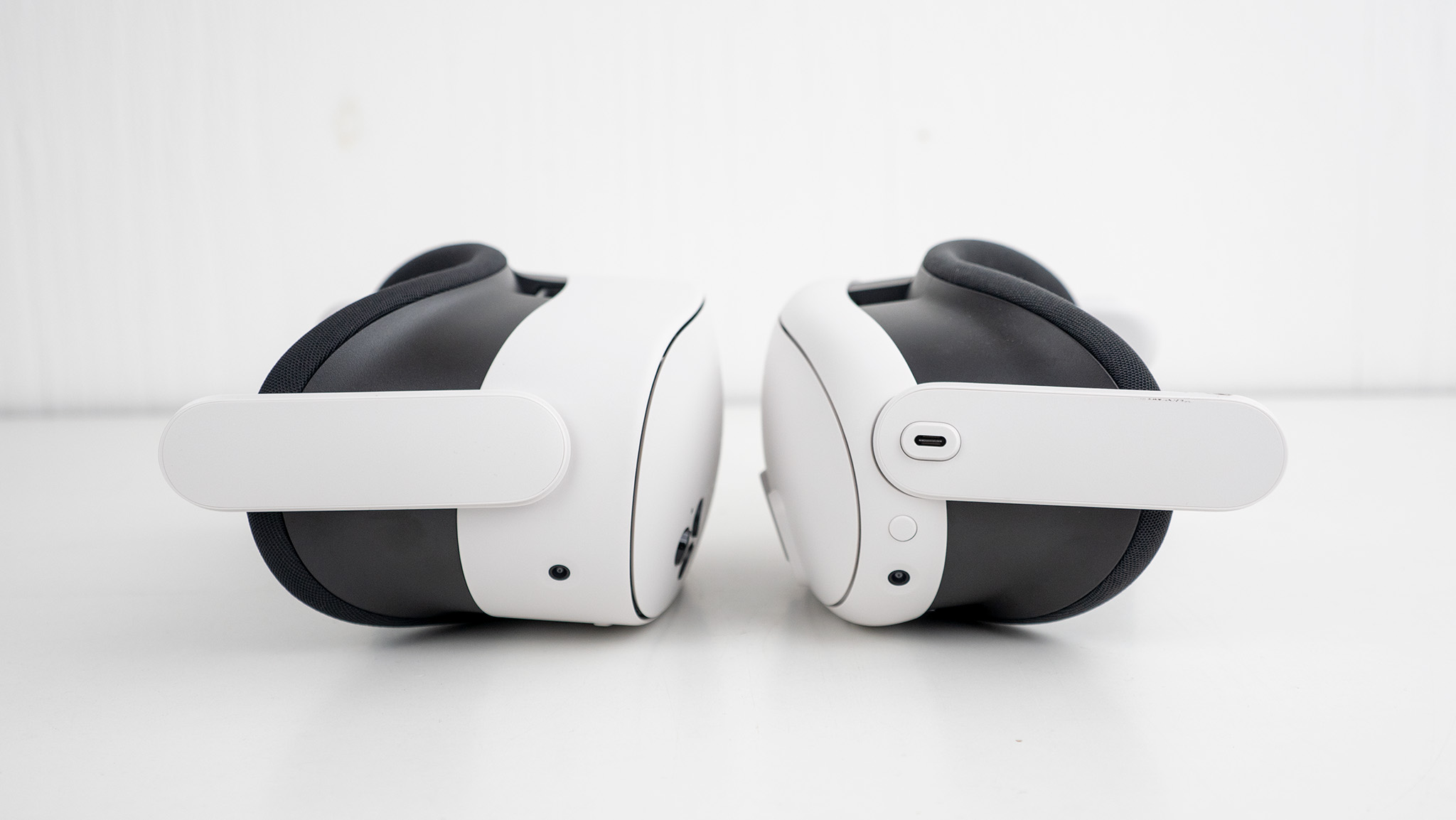

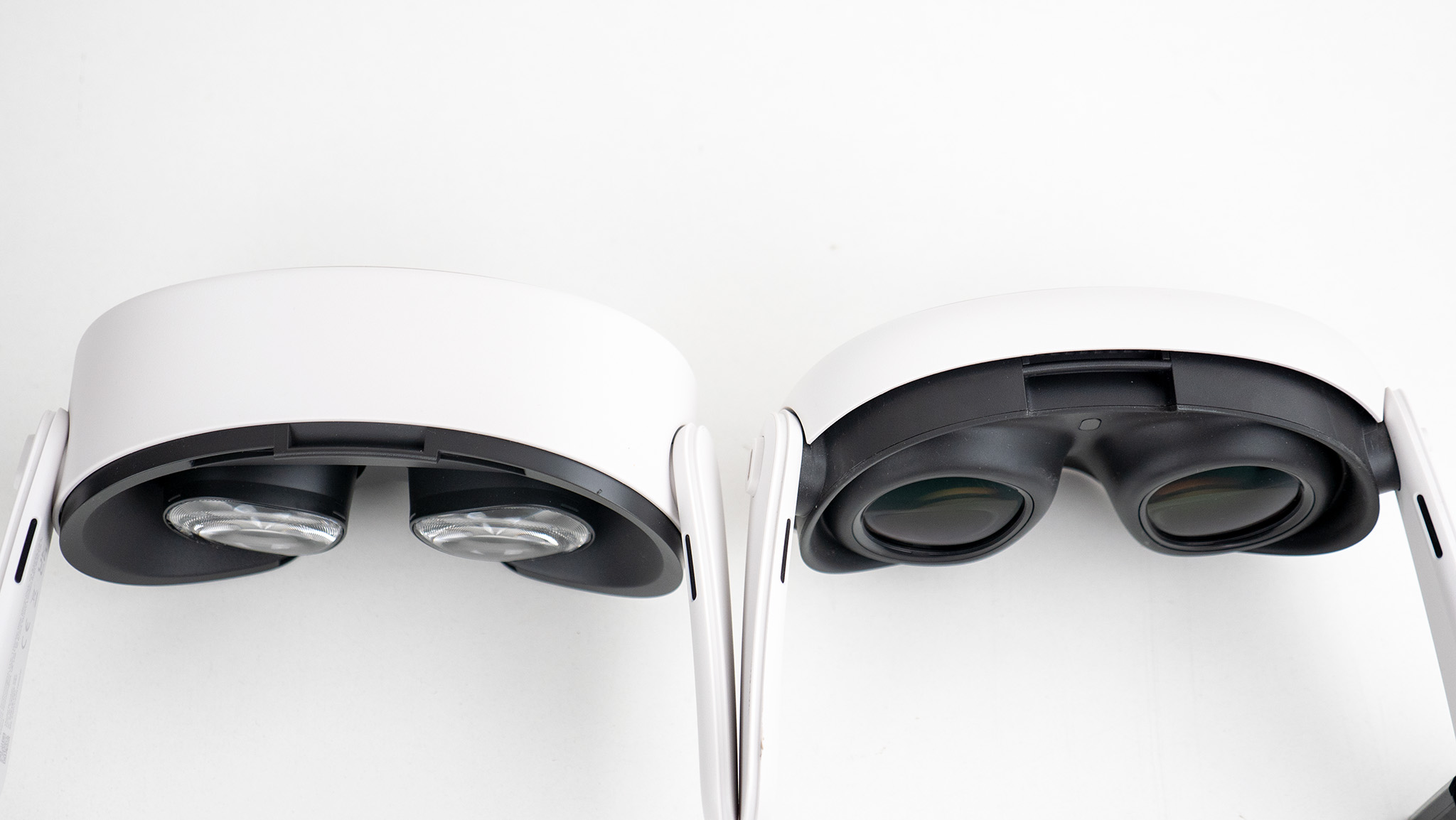
Quest 2 owners may be surprised to learn that the Quest 3S doesn't have a 3.5mm audio jack. The built-in speakers on the Quest 3S arms are excellent, but if you want to avoid audio bleed around others, I recommend picking up the PrismXR Vega T1 earbuds: the connector slots into the USB-C charging port for wireless audio, but with an outer USB-C port for passthrough charging for your battery pack strap.
As a positive, the Quest 3S does slightly better than both the Quest 3 and Quest 2 for battery life, lasting about two-and-a-half hours per charge, while more power-hungry games like Batman Arkham Shadow bring that down to around 2 hours.
I'd still recommend you upgrade the cloth strap with an elite strap with built-in battery pack; it'll be more comfortable and secure than the cloth strap, without any ear irritation, and it'll double the headset's lifespan.

The Quest 3S has one design change that objectively beats the Quest 3: A mixed-reality button on the bottom near the volume rocker, letting you jump between VR and MR immediately. Other Quests use an awkward, unreliable double-tap on the side of the headset to switch. It's really nice having an easy way to check on your surroundings if someone talks to you IRL.
Overall, the Quest 3S design has its flaws, but I don't take for granted that this is a wireless, all-in-one VR headset with a modular design that makes any issues affordably fixable. It's easier to get immersed into VR with a Quest 3S than with any non-Meta headset.
Meta Quest 3S: Display and lenses

The Meta Quest 3S uses the same display and Fresnel lenses as the Meta Quest 2, so if you've only ever used a Quest 1 or Quest 2, you probably won't be particularly disappointed in the Quest 3S's display or lenses. But you won't be wowed either; they're fine, and suit a $299 headset well.
As with all Fresnel lenses, there's a small "sweet spot" right in the middle of each lens where you'll get the clearest view. Anything outside of this circle gets blurrier the closer you look to the edges.
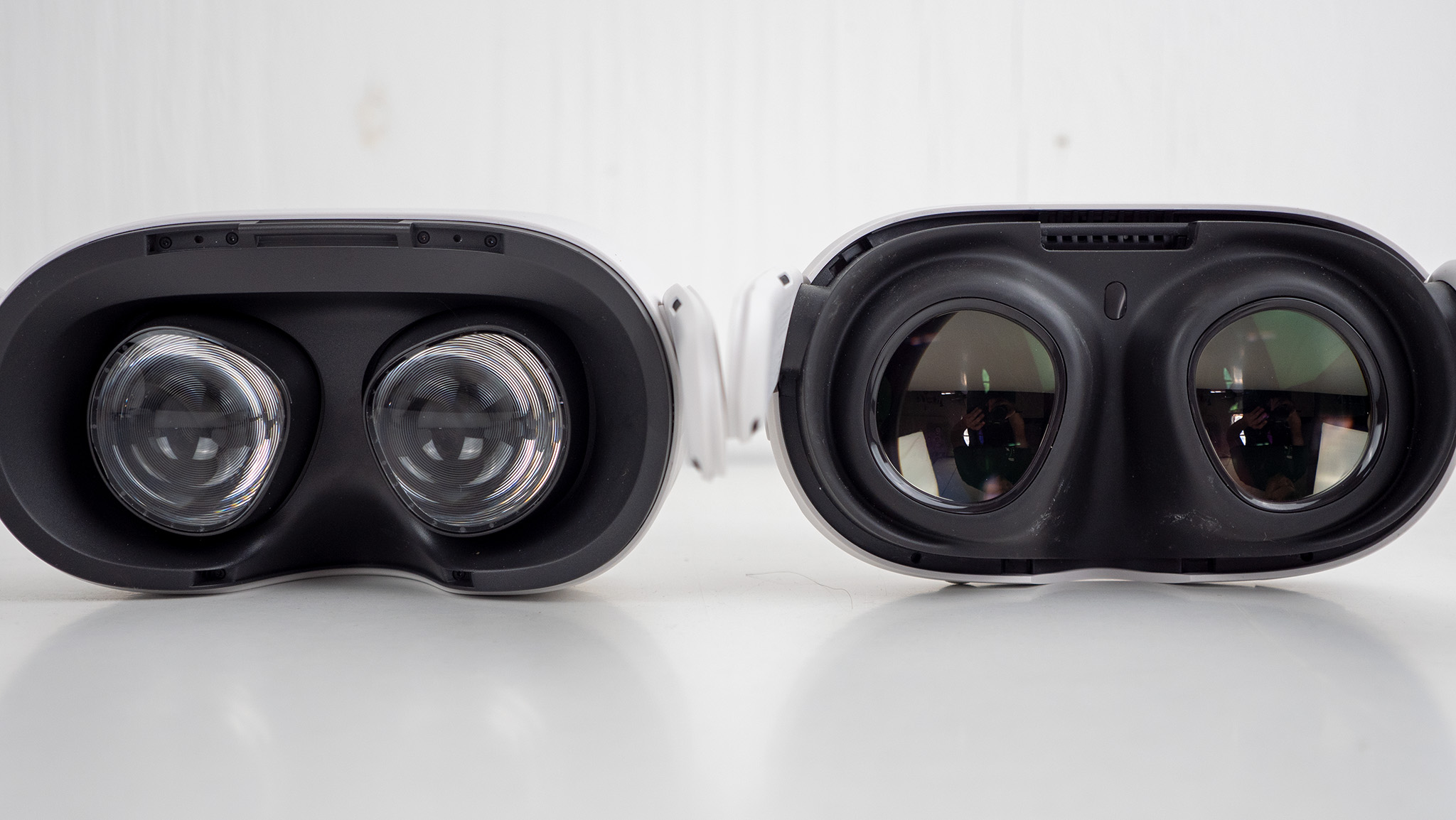
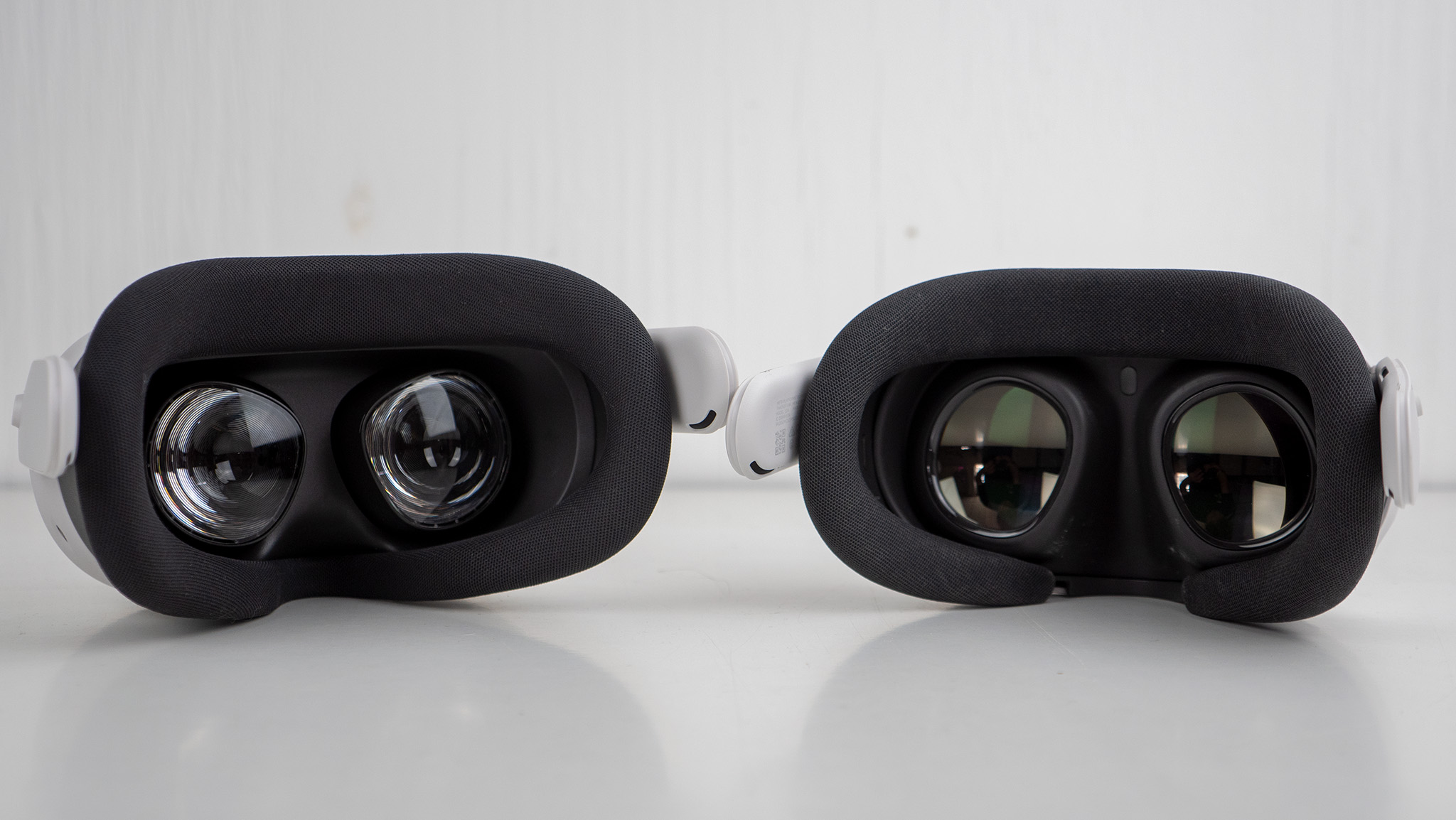
The Meta Quest 3S uses the same lenses and display as the Quest 2, foregoing most next-generation upgrades from the more expensive Quest 3.
The 90-degree FoV on the Quest 3S's lenses feels a bit constricting compared to the substantially wider 110-degree FoV of the Quest 3. This difference cannot be understated, and it all melds together to show just how superior the lenses on the Quest 3 are. But if you haven't tried the Quest 3 before, ignorance is bliss.
The Meta Quest 3S's lenses also adjust the same way as the Quest 2, so if you're coming from a Quest 2 you'll know exactly what to do. The only difference is that there's no 1/2/3 preset number in the middle of the lenses that changes as you adjust the spacing. Meta says it cut this mechanism to keep the manufacturing cost of the headset as low as possible, allowing it to hit that $299 price point.
That being said, if you have an interpupillary distance (IPD) over 72mm you're probably going to find the Meta Quest 3S uncomfortable. If you find yourself in this boat, a 3D printed IPD expander like this one will push the lenses out a bit and help.
If you plan to work in VR or use it for a lot of text-based applications, it makes more sense to spend the extra money on a Quest 3.
Like the lenses, the display on the Meta Quest 3S is the same as the one on the Quest 2. It gets plenty bright, but the contrast is fairly low, the colors are a bit on the dull side, and the resolution is noticeably lower than the Quest 3's panels.
As far as clarity is concerned, I'd say the resolution difference between Quest 3 and Quest 3S is similar to playing games at 1440p vs 1080p. The Quest 3S isn't as sharp, and fine detail gets a bit lost, but it's not offensively lower resolution.
If there's any one area where the resolution and lenses make a big difference, it's for folks who want to work in VR. If that's going to be a big part of your headset usage, stick with the Quest 3.
Meta Quest 3S: Controllers and hand tracking
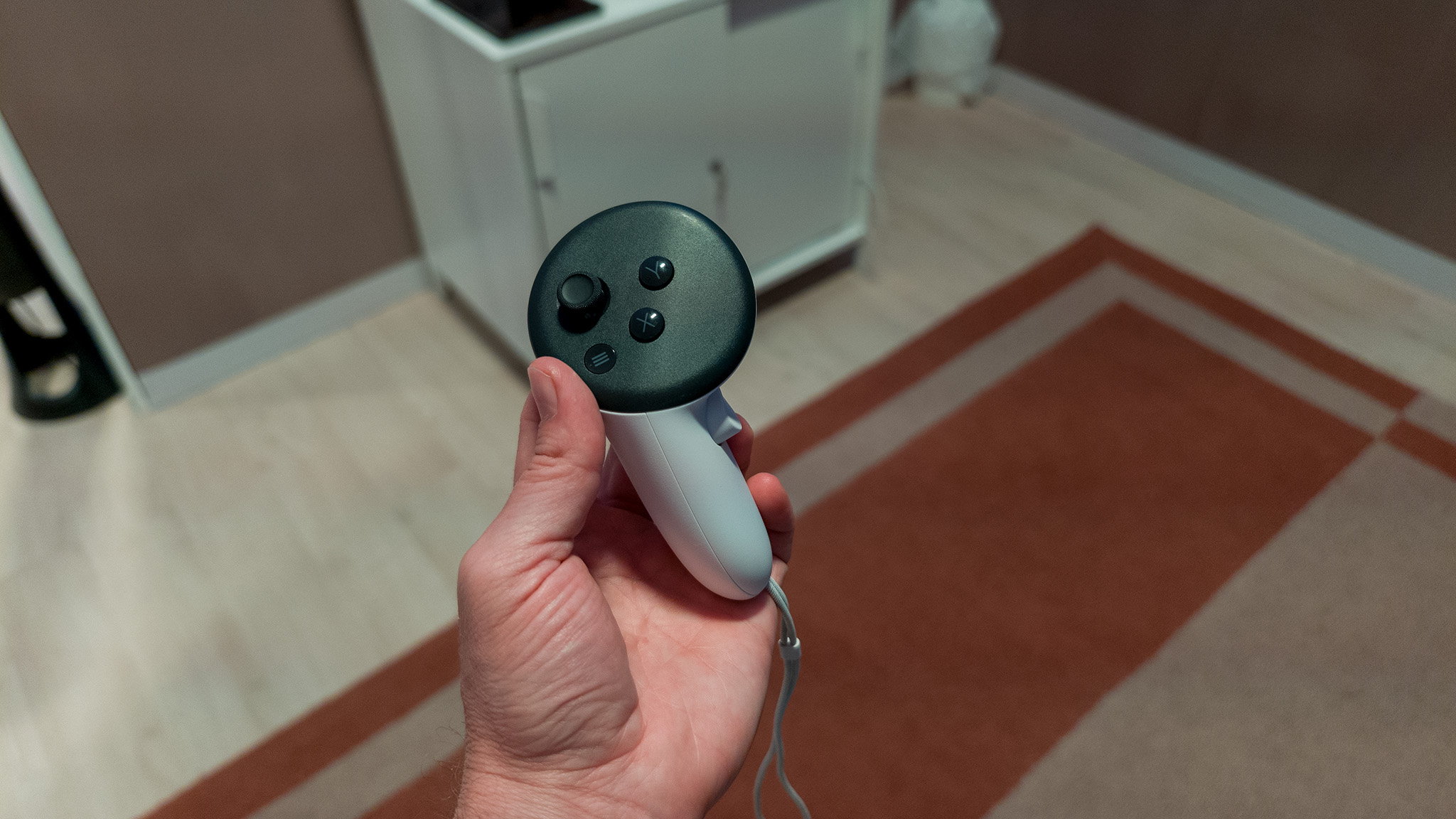
The Meta Quest 3S and Quest 3 use identical controllers. They ditch the Quest 2's LED ring and tighten up some ergonomics for a much smaller profile. The tracking LEDs are situated around the controller face and handles, instead.
Tracking is enhanced through better camera positioning around the headset; they're placed better along the sides and bottom than the Quest 2 for wider tracking range. Plus, Meta's Horizon OS fills in any visual tracking gaps with gyro sensor data from inside the controller and an AI algorithm that predicts hand position based on arm and shoulder movements.
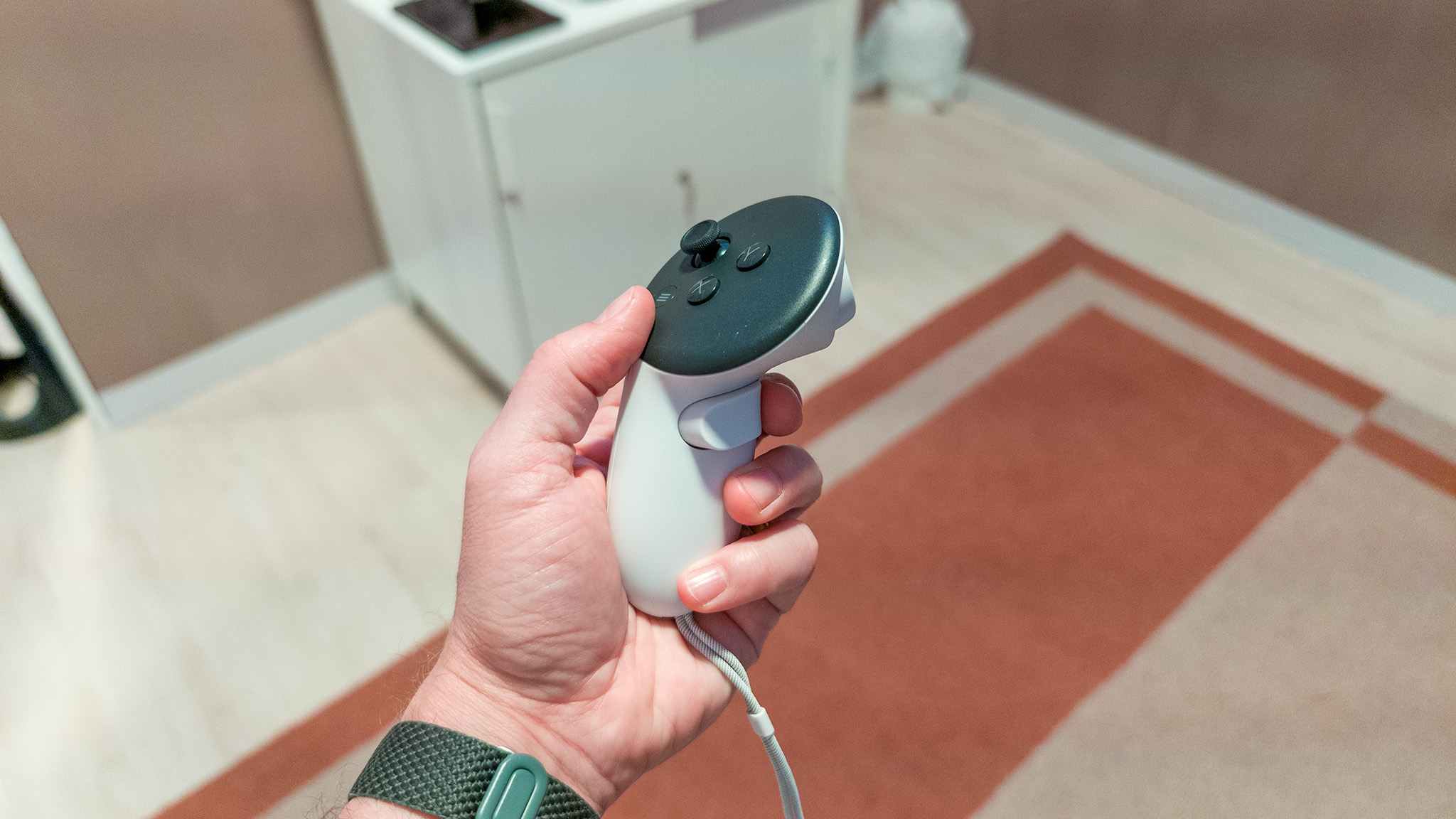
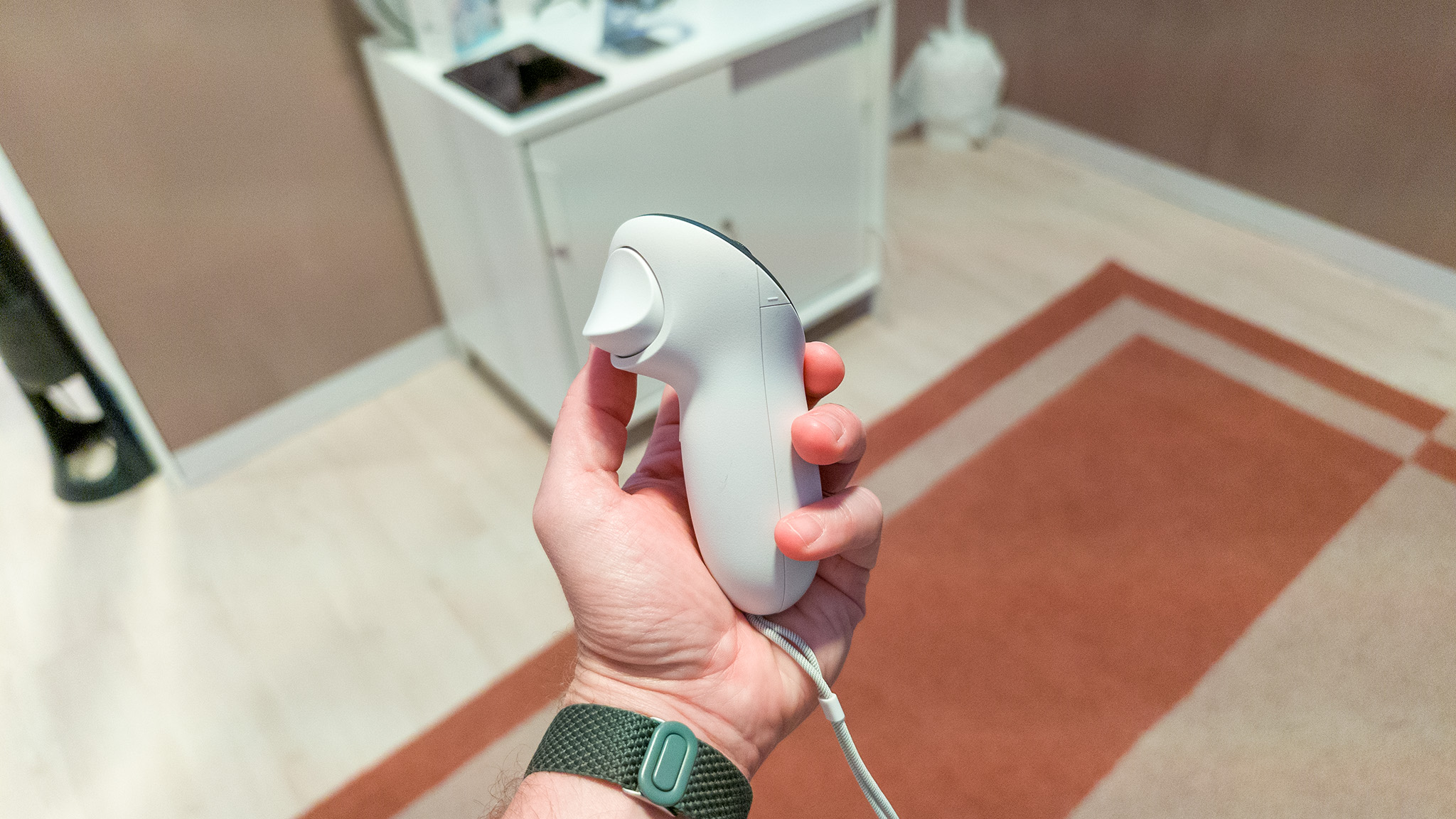
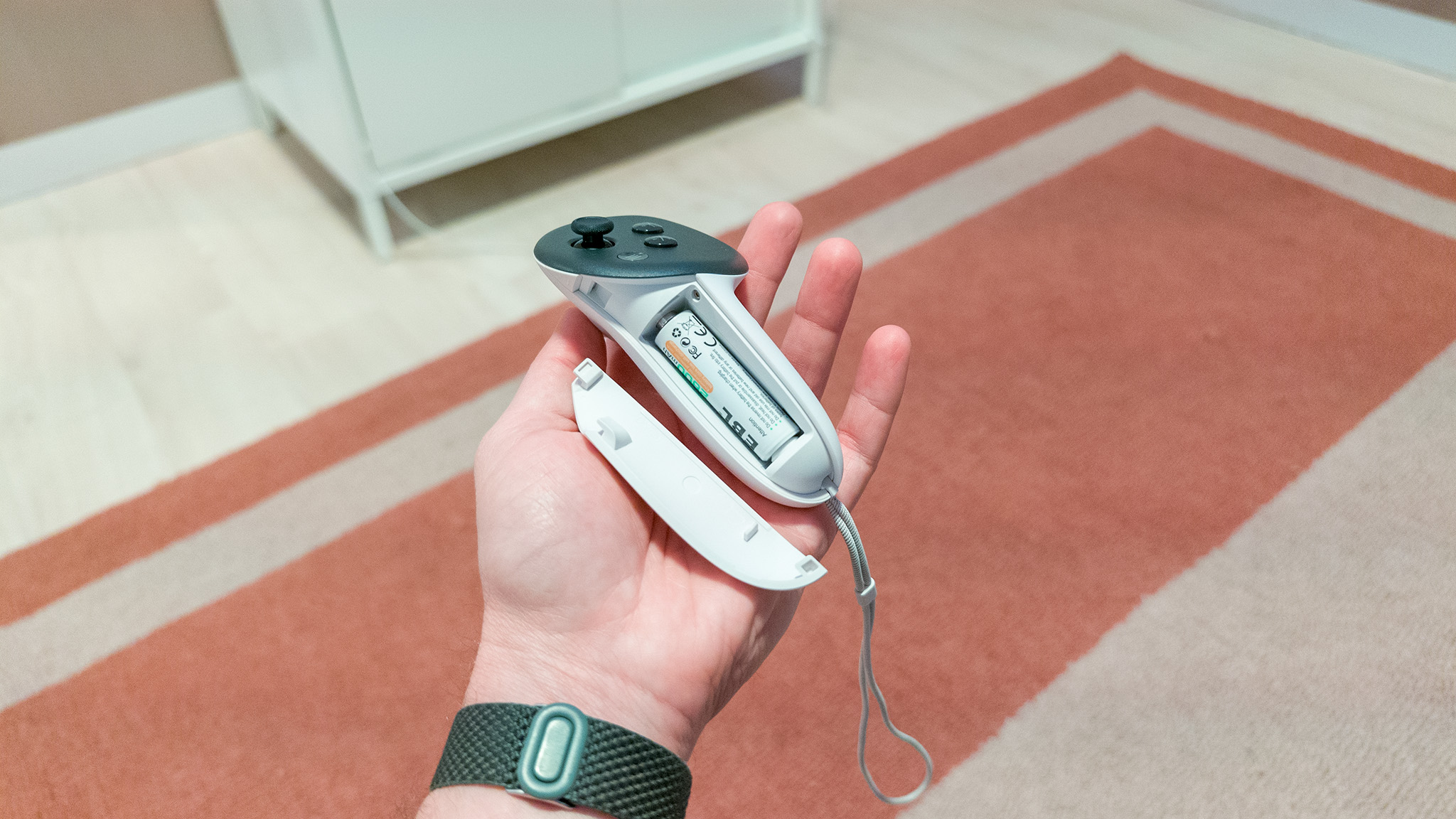
Each controller is powered by a single AA battery. Based on my past year with the headset, you'll only need to swap them out once every two months or so, depending on how often you play. I recommend picking up these cheap Amazon Basics rechargeable AA batteries for a few bucks so you can keep reusing them.
Each controller has a battery door that can be swapped out for any number of excellent controller accessories, like these AMVR controller grips, which add grip and help balance the controllers better with a handy hand strap. I find these controllers to be a tad too small for comfort, so getting a pair of grips helps offset the weight and add substantial comfort for just a few bucks.
Quest 3S also supports what's called Inside-Out Body Tracking. With this, in-game character movements feel more realistic as the headset can properly align the virtual character's torso, shoulders, and arms with your actual movements in real life.
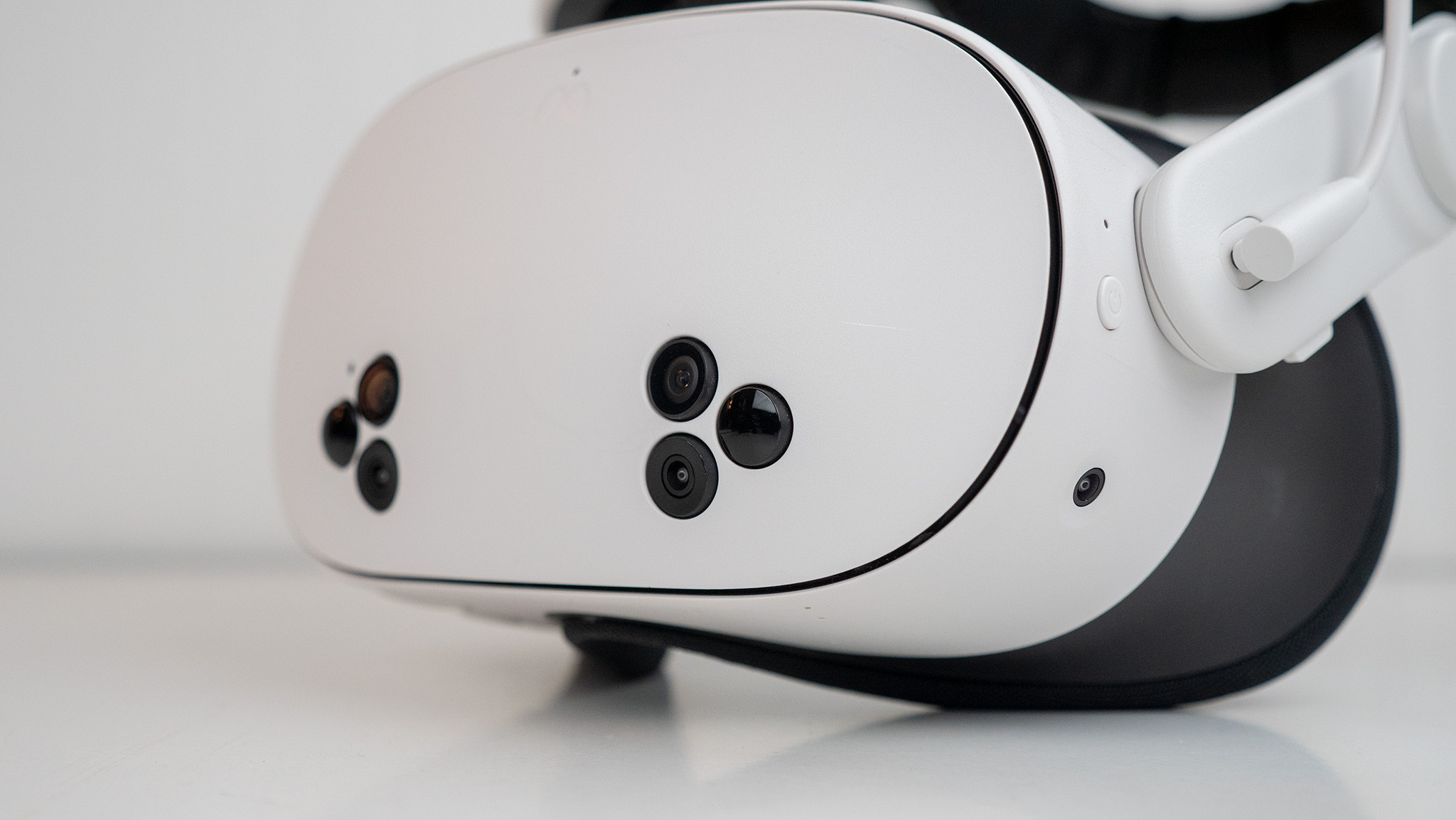
Meta Quest 3S has also been outfitted with two IR illuminators on the front, positioned on the outside of each triple camera array on the front. This is a new feature for any Quest headset and allows the Quest 3S to see completely in the dark, provided you're in a small enough room.
I tested different rooms at night with the lights off, and while tracking didn't work at all in my living room, it worked perfectly in any bedroom I tried it in. Essentially, as long as the Quest 3S can see walls, it will be able to track spatial movement in the dark.
Likewise, hand tracking is better than ever — particularly in low light — than with any Quest headset to date. While I found daytime tracking performance and accuracy to be essentially identical to the more expensive Quest 3, Quest 3S can also track hands in the dark.
That should help significantly in some dimly lit rooms when playing hand-tracked games or during casual entertainment when you're just using your hands to navigate the UI.
Meta Quest 3S: Mixed reality and games
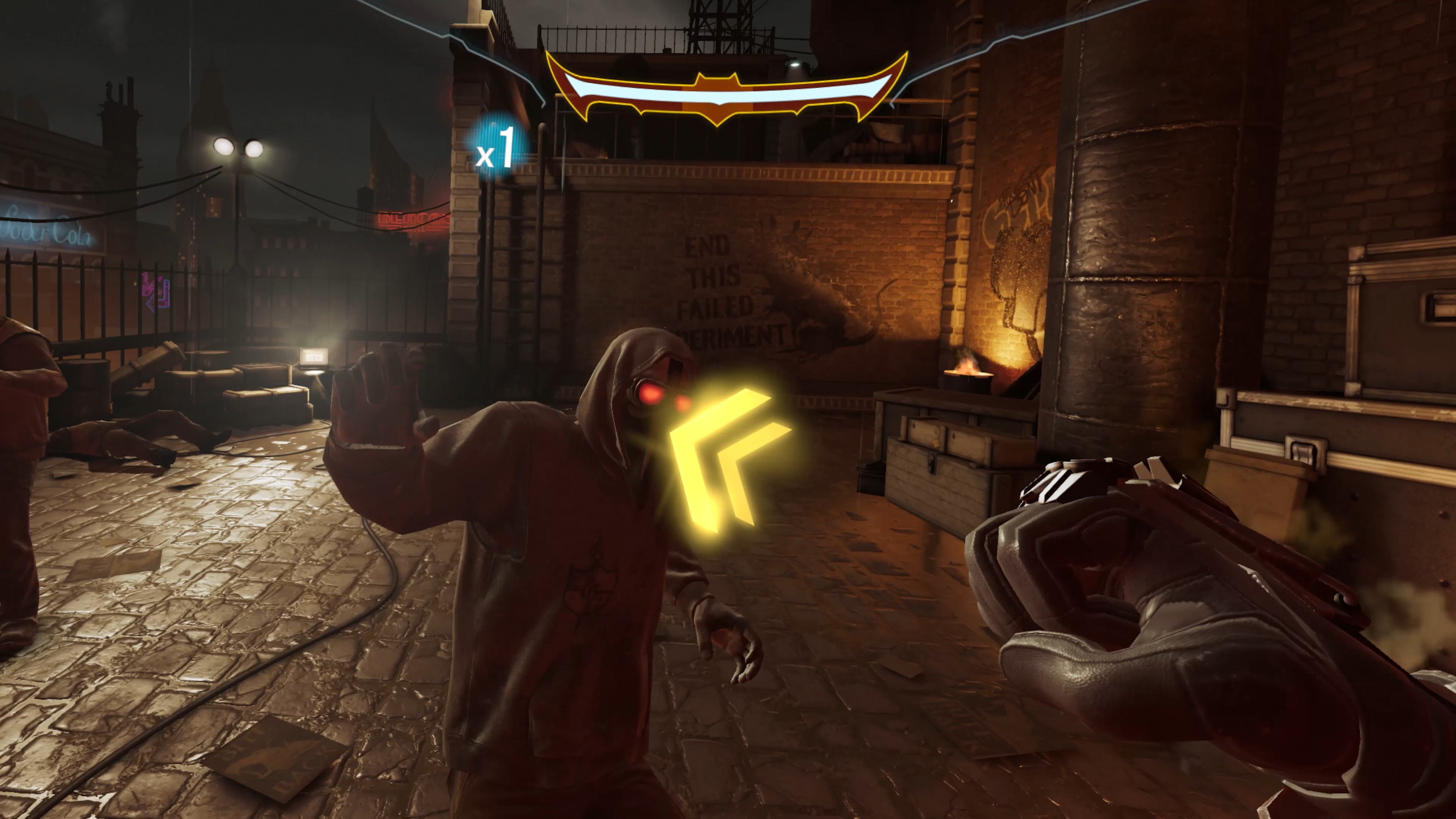
While you'll notice the controller differences and slimmer profile of the headset when unboxing it, nothing prepares you for the full-color mixed-reality vision until you've tried it. It's not as clear as an Apple Vision Pro or even the Meta Quest 3 because of the lenses, but it's beyond just a generational upgrade from the black-and-white, low-res Quest 2 passthrough. If anything, it's like going from a 1950s black-and-white TV to a color HDTV.
The Meta Quest 3S uses the same 4MP dual front-facing cameras as the Quest 3, and one upside to the Fresnel lenses is that they allow more light in from the display, giving it a distinctly brighter look.
Because the lenses aren't as sharp and the display's resolution is lower, it's a bit harder to read text on a phone while wearing the headset, but this isn't a common mixed-reality use case, anyway.
Instead, you'll marvel at how fun games like Starship Home are. Mixed reality games allow you to turn your living room into a spaceship, defend against hordes of zombies in Drop Dead: The Cabin, or play a D&D-like board game together with other headset-wearing friends on your dining room table.
When you're not viewing an augmented version of your real room, you'll be diving dungeons deep in Dungeons of Eternity or just socializing on a Friday evening in Gorilla Tag or Orion Drift.
There are thousands of games on the Meta Quest platform, and that number is growing every single month thanks to a new, more open marketplace and more VR players than ever. Of course, we maintain a list of the best Meta Quest games to give you a good starting point, and there are plenty of great exclusives to consider like Skydance's Behemoth, Alien Rogue Incursion, Metro Awakening, and many more.
All in all, Quest 3 games look a lot better than Quest 2 games, especially when they're Quest 3 exclusive.
The Meta Quest 3S doesn't include a depth sensor like the Quest 3 has, but that doesn't seem to affect its mixed reality performance in my testing.
Meta's Horizon OS has been notably upgraded in its mixed reality capabilities since the launch of the Quest 3 last year, including automatic room mapping and object identification that makes mixed reality effortless. Compared to the Quest 3, the Quest 3S takes about seven seconds longer, but that's not long to wait.
Meta Quest 3S: Competition

When it comes to the best VR headsets, Meta dominates the competition, and most of its rivals tend to sell more expensive, tethered headsets. The only real VR competition is with Meta itself.
Even if you find a used Quest 2 for cheap, the Quest 3S handily beats the Quest 2 as the new standard for affordable VR. Its processor is 100% more powerful, enabling exclusive games the Quest 2 can't handle. Both the headset and controllers are more comfortable. Mixed reality is a core feature, not an afterthought. It's just better!
Of course, the Meta Quest 3 beats the Quest 3S, for the reasons already explained: next-generation lenses with a 20-degree wider field of view (FoV), significantly enhanced clarity, a higher-resolution display, and better contrast and colors than the Quest 3S. The Quest 3S does have the upside of better low-light tracking and the dedicated MR button, however.
You can try the PSVR 2 at $399, the same price as the 256GB Quest 3S, for a few Sony exclusives, PS5-powered graphics, and much better resolution on an OLED display. But I prefer a wireless experience, even with other trade-offs. Otherwise, you could always look at smart glasses from brands like XREAL or Viture as an alternative XR gaming option.
Meta Quest 3S: Should you buy it?
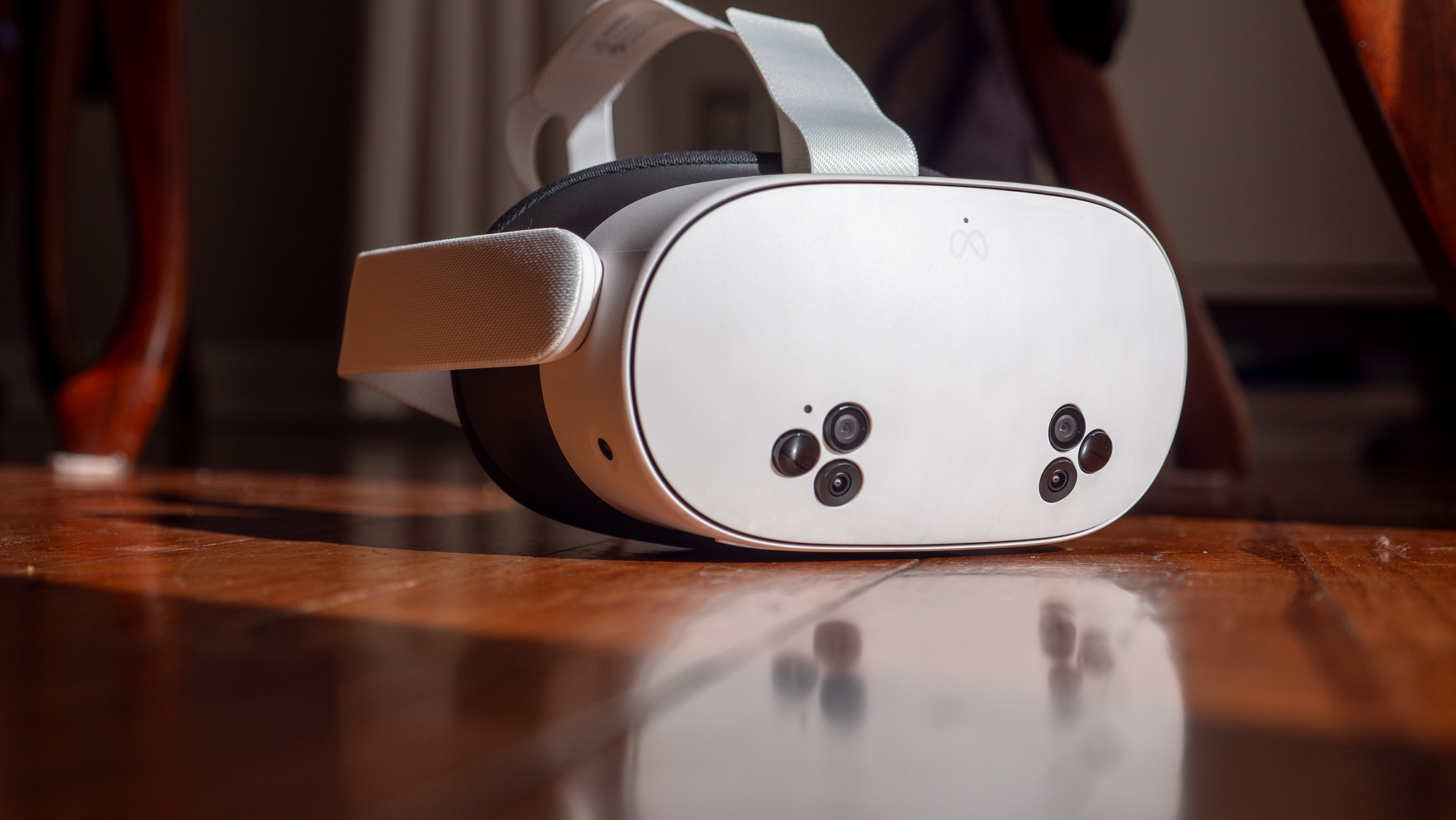
You should buy if...
- You want the best of virtual reality and mixed reality but don't want to spend $500 on a Quest 3.
- You want to play Quest 3-exclusive games and apps.
- You're new to VR and don't want to invest a lot in case you don't like it.
You shouldn't buy if...
- You plan to work in VR. The lenses and display make it difficult to read fine text in this setting.
- You don't like Fresnel lenses.
The Meta Quest 3S is a triumph in every regard. It's an unbelievable bargain at $299, yet it still exhibits the best mixed reality and virtual reality gaming available today.
You'll have to accept the lack of improvement to the lenses and display, as well as Meta's usual design choices that leave you on the hook to upgrade the comfort and battery life. Otherwise, the Quest 3S offers everything you need in a mixed-reality headset today. It has all the games you could ever play on the Quest Store, plus the option to connect to your PC for premium PC VR experiences.
There are certainly reasons to choose a Quest 3 over a Quest 3S, but for most people, the price point and overall value of the Quest 3S make it a must-buy console.
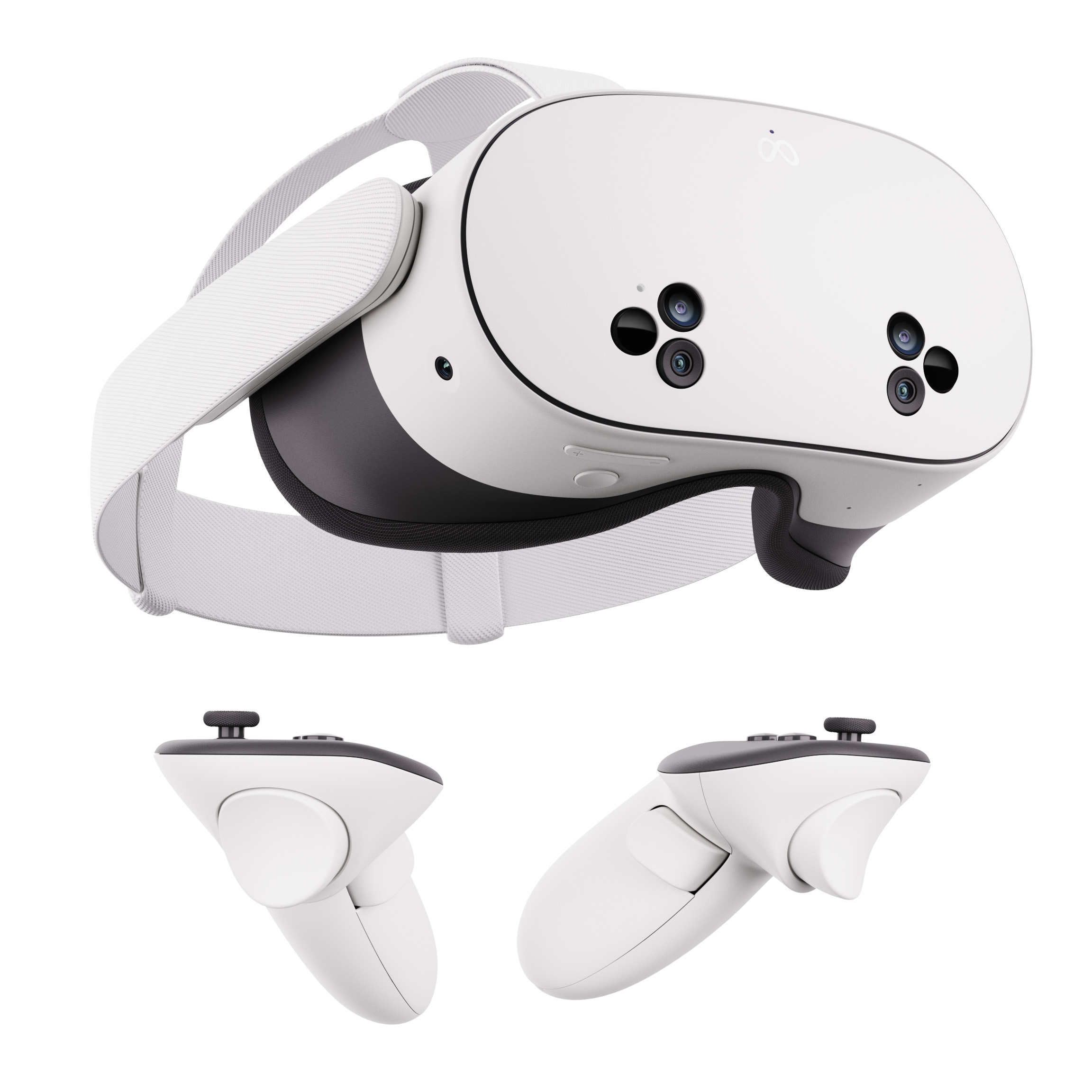
A new reality
Get next-generation virtual reality and mixed reality games and apps with the Meta Quest 3S, a surprisingly affordable headset with capabilities beyond your imagination.

You must confirm your public display name before commenting
Please logout and then login again, you will then be prompted to enter your display name.
